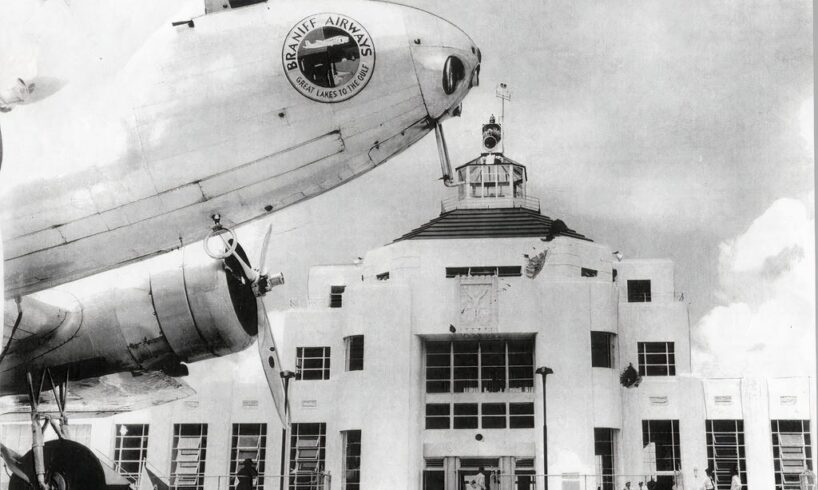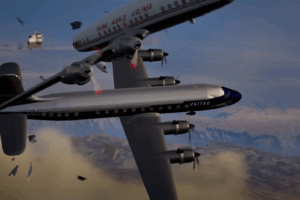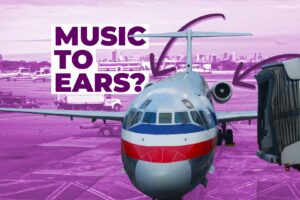
William P. Hobby Airport
(HOU), colloquially referred to as Houston Hobby, is an international airport located just seven miles from downtown Houston. It was the city’s primary airport for many years until Houston George Bush Intercontinental Airport
(IAH) was opened in 1969, and for decades, it was a major jumping-off point for flights from the US to Latin America and the Caribbean.
Much like Dallas Love Field (DAL) and Chicago Midway International Airport (MDW), Houston Hobby has since transformed itself into a secondary airport that operates as a major base for Southwest Airlines
, and is one of the busiest airports in Texas. The eight airlines that currently operate at Hobby fly to more than 80 destinations, and the airport served nearly 15 million passengers last year. As the airport approaches a century of operations, let’s take a closer look at the history and transformation of this fascinating facility.
The first few decades at Houston Hobby
Hobby Airport opened in 1927 as a private airfield on a 600-acre pasture, and by the early 1930s, it was already being served by the early iterations of Braniff International Airways and Eastern Air Lines. As air traffic grew, the site was acquired by the city and was named Howard Hughes Airport in 1938 as he financed the construction of its first air tower. However, after the city discovered that federal improvement funds were not available for airports named after a living person, it was quickly renamed Houston Municipal Airport.
Post-war international growth
After the war, the number of airlines operating at the airport and the routes to other US cities expanded rapidly. But what was perhaps most notable was the growth of services flying south to Latin America and the Caribbean. These included the following:
Braniff International Airways was the first to begin international flights in 1948, using Douglas DC-4s and DC-6s to fly a route to Havana, Panama City, Guayaquil, and Lima. The following year, it began flying direct to Lima and onwards to La Paz and Rio de Janeiro
Pan Am was the first to provide flights to Mexico, beginning nonstop Douglas DC-4 service to Mexico City in 1950.
Chicago and Southern (C&S) Air Lines began flying new Lockheed Constellations that same year to New Orleans and then onwards on its “Caribbean Comet” route to Havana, Kingston, and Caracas.
Delta Air Lines, which acquired C&S to get a foothold in the Houston market, began operating a daily Convair 340 service to New Orleans, Havana, Port-au-Prince, Santo Domingo, and San Juan.
KLM inaugurated the first transatlantic service in 1957, using its new Douglas DC-7s on a route that had a stopover in Montreal, Canada.
Photo: KLM
As the 1950s came to a close, Houston Hobby already served over a million annual passengers with hundreds of flights each week. It had also grown to become a key destination for the most famous names in commercial aviation at the time, including 26 weekday departures on Eastern, 24 on Braniff, and nine on Continental Airlines, Delta Air Lines and Texas International Airways.
Photo: Delta Flight Museum
The arrival of the jet age
Delta Air Lines was the first to provide scheduled jet service to Houston when it launched non-stop Douglas DC-8 service to New York in December 1959. It was followed shortly thereafter by Braniff, which used its new Boeing 707s to Dallas and Chicago from April 1960, and Eastern Airlines with DC-8 routes to New York and Atlanta from June that year. What followed was a flood of new jetliner flights, the highlights of which include the following:
Interesting new jet routes from Houston in the 1960s
Airline
Aircraft
Destination(s)
Year
KLM
Douglas DC-8
Amsterdam (via Montreal)
1960
Delta Air Lines
Convair 880
Chicago, St. Louis, and New Orleans
1960
National Airlines
Douglas DC-8
San Francisco
1961
Continental Airlines
Boeing 707
Los Angeles
1961
American Airlines
Boeing 707
Phoenix-San Francisco
1965
Eastern Airlines
Boeing 727
New York, Boston, and Washington DC
1965
Texas International
Douglas DC-9
New Orleans
1966
Pan Am
Boeing 707
London, Frankfurt
1966
Braniff
BAC 1-11
Chicago, St. Louis, and Minneapolis
1967
By 1967, the airport had been renamed after former Texas governor William P. Hobby, but the future of the facility was uncertain. The City of Houston spent much of the decade acquiring land north of the metro area and approved the construction of a new international airport. When this opened in 1969, all commercial airlines shifted to the new facility, and Houston Hobby was left with no scheduled passenger service. As the international building was demolished, it looked to be the end of the road for Houston’s original airport.
The rebirth of Houston Hobby with Southwest
However, new life was brought to Houston Hobby in 1971 by a small startup airline: Southwest. The company operated as an intrastate airline, flying only within the state of Texas so that it was exempt from regulation by the federal Civil Aeronautics Board, allowing it to undercut the prices of competitors. It quickly established what it called the “Texas Triangle”, a network between Dallas, San Antonio, and Houston, and Hobby was one of the anchor airports in that operation.
Houston Hobby was an ideal airport for low-cost Southwest. The smaller airfield and less congestion provided it with quicker turnaround times, not to mention cost savings over the carriers that were flying into the larger, more expensive airport across town. As Southwest began to gain ground, it faced numerous legal battles with Braniff, Texas International, and Continental, and all three returned to Houston Hobby to compete directly with the young upstart in the hopes of putting it out of business.
However, Southwest only continued to gain ground in Houston, and as it added more Boeing 727s and 737s, it expanded across Texas to add Austin, Corpus Christi, El Paso, Harlingen, Lubbock, and Midland. By the time deregulation came in 1979, the legacy carriers had abandoned the fight, and aside from Southwest, Houston Hobby played host to Hughes Airwest, Ozark Air Lines, and a handful of small commuter airlines. It might no longer be the glamorous international hub it had once been, but its future had been secured by Southwest.
Into the New Century at Houston Hobby
Through the 1980s and 1990s, Southwest continued its relentless expansion across the US, and this meant continued strong growth at Houston Hobby. From its first out-of-state route to New Orleans, it initially expanded north to Tulsa and Oklahoma City and west to Albuquerque, then a year later added Kansas City, Phoenix, Las Vegas, and Denver.
Photo: Houston Airports
By the end of the century, it was serving nearly 30 destinations from Houston Hobby, and its competition at the airport was very limited. Legacy operators such as Delta, Northwest, and American Airlines provided limited connections to their own hubs, while Continental had experimented with (and abandoned) a “dual-hub” with both Houston airports with commuter flights between the two.
By 2011, Southwest expressed interest in operating international flights from Houston Hobby, which was approved by the city council a year later. This resulted in a $156 million expansion of the airport, fully funded by Southwest, which included a new west concourse with five international gates. Completed in 2015, Southwest immediately launched flights to nine international destinations, including Cancun, Punta Cana, and San José Del Cabo.
Photo: William P. Hobby Airport
Current day operations at Houston Hobby
Today, Houston Hobby might be much smaller than its cross-town counterpart, but it performs a vital role for the city by adding billions of dollars annually to the local economy and serving over a million passengers a month. Moreover, its convenient location and efficient operations led to it being named the first five-star Airport in North America by Skytrax in 2022.
Flight operations in 2025
Southwest continues to dominate Houston Hobby, operating more than 93% of all flights from the facility. Seven other airlines compete, with Houston-based Avelo Airlines notable for adding two routes from the airport late last year.
Airlines operating at Houston Hobby
Airline
Number of destinations
Busiest destination
Southwest Airlines
71
Dallas Love
Allegiant Air
5
Provo
Avelo Airlines
2
New Haven
Delta Air Lines
2
Atlanta
American Airlines
1
Dallas Fort-Worth
Frontier Airlines
1
Denver
JetSuiteX
1
Dallas Love
Sun Country Airlines
1
Minneapolis
Photo: Foresaken Films | Unsplash
A new terminal expansion opens in 2027
Houston Hobby remains a single-terminal airport with two concourses (domestic and international) and 30 gates. However, passenger numbers have nearly doubled since the domestic concourse was completed in 2003, so the airport has initiated a $470 million expansion project that will add seven new gates, an advanced baggage-handling system, additional baggage claim carousels, and an overhead canopy to the departure curb and connection from the terminal to the parking garage.
Photo: William P. Hobby Airport
Jim Szczesniak, Director of Aviation for Houston Airports, expressed excitement about the development:
“This expansion isn’t just about adding more gates—it’s about enhancing every aspect of the passenger experience. As North America’s first and only 5-Star Skytrax airport, it’s essential for Hobby Airport to offer facilities and services that match our world-class reputation. Partnering with Southwest Airlines on this project allows us to create a truly remarkable experience for all travelers.”
Photo: William P. Hobby Airport
The expansion is almost entirely funded by Southwest, which will take six of the seven new gates and is expected to be completed by 2027. As a result of the expansion, Southwest also decided to cease its limited operations at IAH and focus its efforts entirely on Houston Hobby. This ensures that the fortunes of Houston’s oldest airport and its largest partner will remain intertwined for decades to come.



